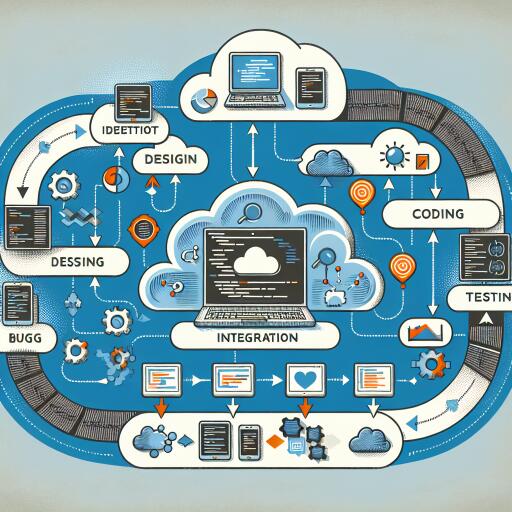Embarking on the Journey of Cloud Application Development: A Comprehensive Guide
The landscape of cloud application development is a dynamic field, propelled by the evergreen nature of technological advancements and market demands. This domain not only addresses the storage and performance dilemmas faced by businesses but also significantly enhances the user experience. The development of cloud applications involves a systematic process that merits a closer look to understand its depth and breadth fully.
Understanding the Market and Hiring Expertise
The cloud app development market is continually influenced by trends and technologies, shaping the future of app creation. Factors like the emergence of leading cloud providers, the adoption of containerization, and Kubernetes are pivotal in ensuring consistency throughout the development and testing phases. Nevertheless, assembling the right team for the job remains a challenge. Identifying adept developers requires insights into their experience, communication skills, and alignment with the project’s goals. Additionally, budget planning and uncovering hidden costs are critical elements in this stage.
Strategic Development and Technical Choices
Employing a strategic approach to development and testing is crucial for crafting efficacious applications. Agile practices offer the flexibility needed for adapting to changes, while automated testing and continuous integration/continuous delivery (CI/CD) enhance efficiency and reduce time and costs. The technical stack, including programming languages, frameworks, databases, and cloud platforms, should be tailored to meet the project’s specific needs.
Furthermore, the cloud app architecture must support easy scaling, deployment, and performance enhancements. Choosing the right monetization model is also a decision point that could impact the app’s revenue generation strategy, such as subscriptions, freemium offerings, or ad-based models.
Launching and Beyond
From infrastructure provisioning to deployment and ongoing maintenance, launching a cloud app is just the beginning. Implementing robust monitoring, logging tools, and auto-scaling practices are imperative for long-term success. Cloud services offer unparalleled scalability, reducing infrastructural costs and facilitating diverse payment models such as pay-as-you-go, thereby minimizing capital expenses.
Moreover, cloud development services expedite the development process through rapid prototyping, automated updates, and utilizing pre-built components. Features like automated deployment, content delivery networks (CDNs), data analytics, and machine learning functionalities significantly enhance deployment processes and operational capabilities.
Strategies of Successful Cloud Companies
Leading cloud companies deploy a mix of strategies to optimize their development processes, ensure product quality, and sustain market competitiveness. Agile methodologies, DevOps integration, microservices architecture, and serverless computing are just the tip of the iceberg in a broad array of tactics aimed at streamlining development efforts.
Containerization with Docker and orchestration with Kubernetes have become standard practices, providing consistency, portability, and efficient scaling. Implementing CI/CD pipelines, security by design principles, and leveraging multi-cloud solutions are also strategic moves adopted by successful firms to stay ahead.
Future-forward Development Strategies
The future of cloud app development points towards utilizing artificial intelligence and machine learning to enhance app capabilities, embracing low-code/no-code platforms for speedier development, and focusing on user-centered designs to deliver superior experiences. Furthermore, maintaining rigorous security and operational controls remains paramount for the integrity and success of cloud applications.
In essence, the development of cloud applications is a journey marked by continuous learning, adaptation, and innovation. As businesses venture into this realm, understanding the comprehensive process and best practices can pave the way for the successful realization of cloud-based solutions that meet the evolving needs of users and industries alike.










